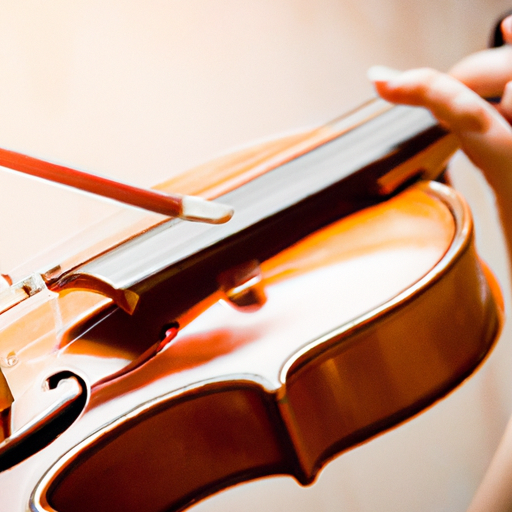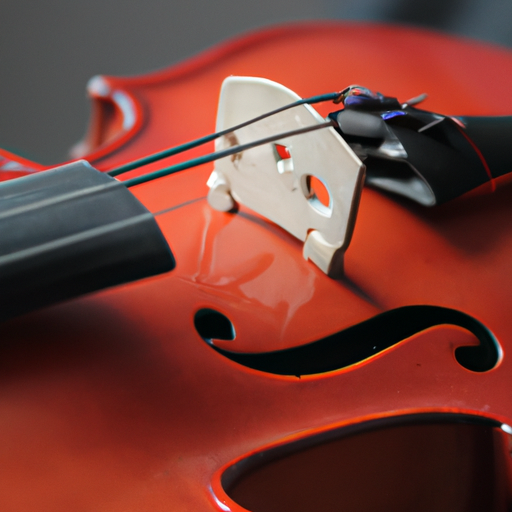
Learning to play the violin can be a rewarding and fulfilling experience. Whether you're a complete beginner or have some musical background, mastering the violin requires dedication, practice, and the right guidance. In this article, we will guide you through the essential steps to fast-track your journey to becoming a proficient violinist.

Before diving into playing, it's important to understand the basic components of the violin. The violin consists of four main parts: the body, neck, fingerboard, and strings. Familiarize yourself with these parts and how they contribute to the sound production.

Additionally, get to know the different types of violins available, such as acoustic and electric, and choose the one that suits your style and preferences.
Choosing the right violin is crucial for your learning journey. Consider factors such as the quality of craftsmanship, size, and price range that aligns with your budget.
It's advisable to rent a violin initially to get a feel for it before making a long-term investment. Seek guidance from an experienced violin teacher or a reputable music store to ensure you choose the right instrument that matches your skill level and goals.
Properly holding and positioning the violin is essential for producing a clear and resonant sound. Many beginners tend to develop bad habits, such as gripping the neck too tightly or resting the chin too heavily on the chinrest.
Take the time to learn the correct hand and finger positions, as well as how to balance the instrument on your shoulder. Seek guidance from a qualified instructor to correct any mistakes and establish a solid foundation for your violin technique.
Learning to read sheet music is an integral part of playing the violin. Familiarize yourself with the staff, treble clef, time signatures, and note values. Start with simple exercises and gradually progress to more complex musical pieces.
Enroll in music theory classes or find online resources that provide interactive lessons to help you grasp the fundamentals of sheet music reading. With regular practice, you'll become more confident in interpreting musical scores and playing them on the violin.
The bow is an essential tool for producing various tones on the violin. Proper bow control involves mastering techniques such as bow grip, bow pressure, and bow speed.
Practice exercises that focus on bowing exercises, such as long bows, spiccato, and staccato, to improve your control and precision. Experiment with different bowing techniques to create different sound effects and expressions.
Playing the correct notes on the violin requires precise finger placement. Proper finger technique involves placing the fingers on specific parts of the fingerboard to produce the desired pitch.
Start with simple exercises that focus on finger placement and gradually progress to playing scales and melodies. Practice regularly to develop muscle memory and accuracy in hitting the right notes.
Scales are fundamental to developing your fingering technique, intonation, and rhythm. Begin with major scales and gradually move on to minor scales and other modes.
Practice playing scales with different rhythms, dynamics, and bowing patterns. This will enhance your finger coordination and improve your overall dexterity on the instrument.
Gaining speed on the violin requires focused practice and exercises that target your finger and bowing agility. Start with slow and deliberate movements, gradually increasing the tempo as you become more comfortable.
Utilize exercises like finger patterns, double stops, and string crossings to build speed and accuracy in your playing. Consistency and patience are key to gradually improving your speed on the violin.
The violin is known for its ability to convey emotions through music. To truly master the violin, it's important to explore various techniques for expressing yourself and infusing emotion into your playing.
Experiment with dynamics, vibrato, and different bowing techniques to add depth and feeling to your performances. Listen to recordings of accomplished violinists to learn from their interpretations and incorporate their musical nuances into your playing.
As you progress on your violin journey, it's essential to continue seeking guidance from experienced teachers and musicians. Take advantage of workshops, masterclasses, and performances to expand your knowledge and gain inspiration.
Set goals and challenge yourself to learn new pieces, explore different genres, and collaborate with other musicians. Embrace the lifelong learning process and never shy away from taking on new challenges to further develop your violin skills.
Embarking on the journey to master the violin may seem daunting, but with dedication, practice, and the right approach, it's an achievable goal. Follow these steps, seek guidance from qualified instructors, and most importantly, enjoy the process of learning and making music on this beautiful instrument.
Click here to find out more about renting or purchasing a violin to start your musical journey.